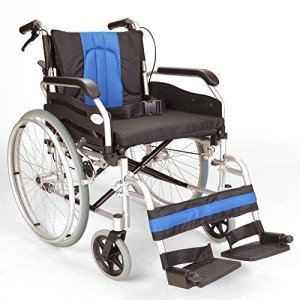Additional Wide Bariatric Wheelchair With 24" Seat
Frame
Wheelchairs are normally produced in a standard width of 16" (narrow grownup), 18" (basic adult) or 20" (broad adult). However, some wheelchair users require a seat width larger than these standards. bariatric living aids are generally fitted by an expert and based upon the user's measurements.
In order to get the most comfy and safe ride for passengers, it is essential that wheelchairs are properly sized. This means that the wheelchair should have the ability to accommodate the user's size while having the ability to steer in tight areas. This is why BriteLift offers customized lorries to transport wheelchair passengers. This includes vans that can securely drive and steer big wheelchairs, allowing them to feel safe and comfy in every trip. This is the only way to offer the most reliable transportation for wheelchair passengers.
Seat
Bariatric wheelchairs are larger than basic wheelchairs and are created to accommodate individuals who are heavier or larger. This additional large bariatric wheelchair from Medline features a 24" seat and a carbon steel frame with rust- and chip-resistant chrome plating. The wheelchair has tool-free push-button adjustable footrests and easy-to-clean vinyl upholstery. It can support up to 500 lbs.
When choosing the right wheelchair width, it is important to measure the user sitting generally on a flat surface area across their best part of the lap which is normally their hips. It is likewise suggested that you use a yardstick instead of a measuring tape as it tends to offer a more accurate measurement. If the user will be wearing a winter coat then an additional 2" must be added to the measurement of their seat width.
Weight Capacity
A bariatric wheelchair is usually bigger and heavier than basic wheelchairs. This is why they need more mindful maneuvering. Drivers need to be trained in handling these passengers. Moreover, vehicles need to have adequate room for these chairs as well as ramps and wheelchair lifts. In addition, they require to know how to schedule these rides ahead of time.

When selecting the chair width, it is essential to determine the user's best point in the seat, which is usually the hips. Many wheelchair producers likewise provide a yardstick that can be utilized to assist with this measurement. When determining an individual's width, it is best to take the measurement directly across and not cover the tape around their hips which can give an incorrect reading.
Sometimes, the largest part of an individual's thighs may be larger than their hips so this need to be taken into account when selecting the chair width. In these circumstances, it is in some cases essential to add an additional 2" to the chair width.
In general, the weight capacity of a bariatric wheelchair need to not be surpassed under any scenarios or severe injury may result. When using the chair, constantly be sure that it is on a stable and level surface area with front casters pointing forward and wheel locks engaged. In addition, never ever lean or move the center of mass while being in the chair.
